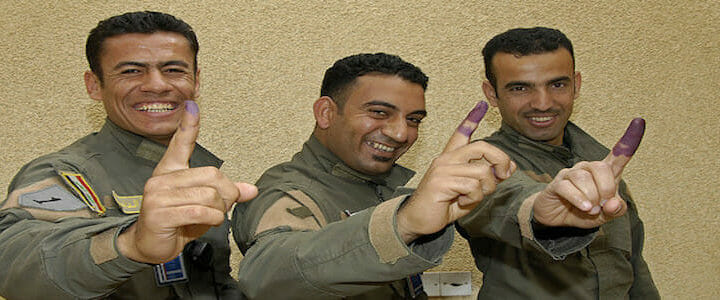Whenever I see an article on how to win the global information fight, I roll my eyes and prepare myself for a discussion that ignores the basic realities of Washington bureaucratic infighting, and all the things we’ve have already tried and failed. This was my reaction when I saw the headline “How to Stop Losing the Information War” on DefenseOne, an AtlanticMedia site. So imagine my surprise to read a proposal from Air Force Maj. Luke Karl, Army Maj. Joseph Lane, and Navy. Cmdr. David Sanchez that is truly an idea whose time has come.
The trio rightly point out that when the State Department absorbed the duties of the U.S. Information Agency in 1999, there was really no longer anyone in charge of one of the four instruments of national power. The Department of State is obviously in the lead for diplomacy, and the Department of Defense for the military. The Departments of Commerce and the Treasury share the economic. But poor information was left out in the cold, with State’s half-hearted attempts at weaving “public diplomacy” into its operations proving ineffective.
Meanwhile, our enemies cranked out propaganda that was successful not only in recruiting new martyrs for the cause, but in discrediting American actions and the motives behind them. Al Qaeda and Islamic State communications efforts might seem crudely absurd to the average American who consumes media across multiple platforms (often simultaneously), but to the target audience, it was brutally effective.
And the U.S. has simply been unable to match it.
Weaving the strategic narrative
To remedy this, and to end the bureaucratic food fight over who gets to control the direction of American strategic communication, the authors suggest creating a new office within the National Security Council. There is already a deputy national security adviser for strategic communications, but that individual’s role has been more focused on communicating the NSC’s work to the American public, not shaping the counterinsurgency and counterterrorism messages.
Their new Office of Strategic Narratives would have “a direct line to the president” and oversight of the Broadcasting Board of Governors, which runs programs like Radio Free Europe and Radio Liberty, as well as the Global Engagement Center, a relatively new organization inside the State Department that is supposed to function much like the USIA did, but for which the Trump Administration has not spent the appropriated money.
The NSC is uniquely positioned to perform this role. During the Obama years, there was much grumbling over the way the NSC staff, whose ranks had swelled to an unprecedented 400 people, was micromanaging (or trying to micromanage) the Pentagon. Under Trump, the NSC staff is back down to a much more manageable size of around 70, and it has the opportunity to return to its original role.
The NSC was never intended to be a substitute for the Pentagon hierarchy or other executive departments, but it was designed to do just the sort of interagency coordination the authors envision in their article.
The National Security Act of 1947 created both the NSC and the CIA. Congress originally intended for the CIA to serve in the kind of coordination role that the Office of the Director of National Intelligence now performs. Similarly, the NSC was intended “to assess and appraise the objectives, commitments, and risks of the United States in relation to our actual and potential military power,” to “consider policies on matters of common interest to the departments and agencies of the Government concerned with the national security,” and to make recommendations to the president in both areas.
Strategic communication is an area that would benefit from this oversight. Forget for a moment about deciding which agency should have the lead; inside the Pentagon the brass can’t even decide who has the lead, or even what to call the process.
The bureaucratic food fight
In 2012, Acting Assistant Secretary of Defense for Public Affairs George Little declared that the PA shop would no longer use the “confusing” term strategic communications, and would instead use “communications synchronization.” But he also asserted public affairs’ role in overseeing not only the development of messages, but the development of the military doctrine for developing and disseminating those messages.
To many, it seems straightforward. The public affairs officers are the ones who do messages. But the average PAO is too hampered by the doctrine of “inform, don’t influence” to adjust to crafting a message that actually tries to change someone’s belief or behavior. That is perhaps why the announcement didn’t sit well with the people in the office of the under secretary of defense for policy, who had viewed strategic communication as their domain, with public affairs playing just one part in the play.
Now that Congress has downgraded the ASD for public affairs to “assistant to the secretary of defense” rather than a Senate-confirmed assistant secretary, the position has even less influence than before.
About 10 years ago, there was even a proposal floating around Army headquarters to create a three-star general billet responsible for overall communications that would unite the Army’s public affairs and recruitment marketing under one boss. It didn’t get very far, mainly because it would require congressional action, and others thought that if anyone were to do the job, it should be a civilian.
The authors rightly point out that a new office within the NSC would require no new authorities; the president could make it happen with little more than a wave of his hand. I can only hope that the right people see and absorb their ideas. The stakes are too high to maintain the present course.



